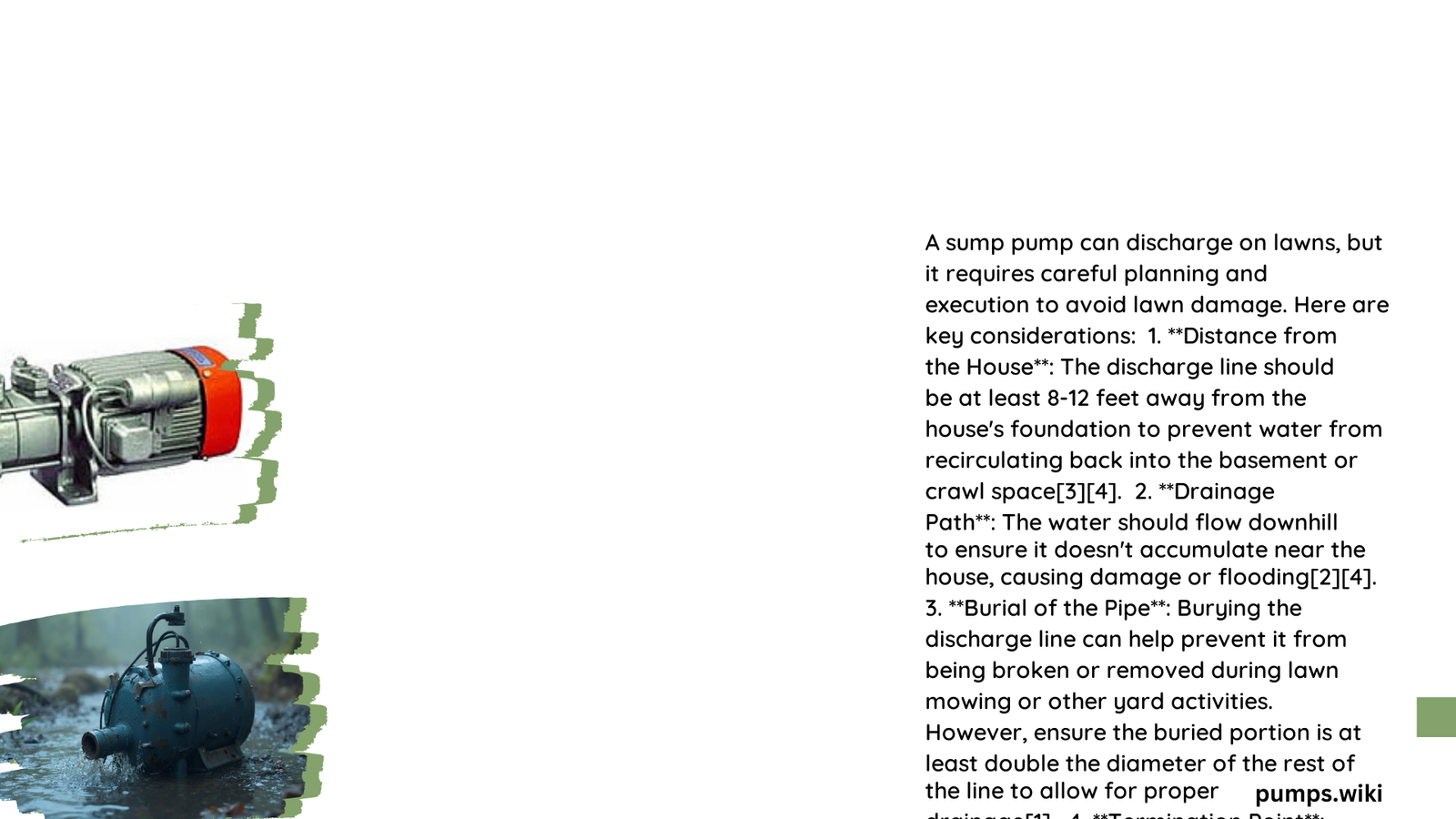Sump pump discharge on lawns is a complex issue involving local regulations, environmental considerations, and potential lawn health impacts. Homeowners must navigate specific guidelines to ensure proper water management, prevent foundation damage, and maintain landscape integrity. Understanding the nuanced approach to sump pump water disposal can help prevent potential legal and environmental complications while protecting your property’s drainage system.
What Are the Legal Considerations for Sump Pump Lawn Discharge?
Navigating the legal landscape of sump pump discharge requires careful attention to local municipal regulations. Different jurisdictions have specific rules that homeowners must follow:
Local Regulation Variations
- Municipal Codes: Each city or county may have unique requirements
- Discharge Distance: Typically 8-20 feet from foundation
- Prohibited Areas:
- Near property boundaries
- Public right-of-way
- Sanitary sewer systems
| Regulation Type | Typical Requirements |
|---|---|
| Minimum Distance | 10-20 feet from house |
| Discharge Volume | 10-60 gallons per minute |
| Soil Percolation | Must allow natural drainage |
How Does Sump Pump Water Impact Lawn Health?

Water Volume and Lawn Tolerance
Sump pump discharge can significantly affect lawn health depending on:
– Water quantity
– Discharge frequency
– Soil drainage capabilities
Potential Lawn Impacts:
– Soil compaction
– Nutrient leaching
– Root system damage
– Potential erosion
What Grass Types Work Best with Sump Pump Discharge?
Certain grass varieties demonstrate superior tolerance to periodic water exposure:
- Flood-Resistant Grasses:
- Perennial ryegrass
- Tall fescue
-
Kentucky bluegrass
-
Recommended Landscaping Strategies:
- Create gentle slope away from foundation
- Install drainage channels
- Use rain gardens
- Implement dry wells
What Are the Best Discharge Practices?
Technical Recommendations
- Use appropriately sized discharge pipe
- Install below frost line
- Include anti-freezing mechanisms
- Direct water away from foundation
- Ensure natural percolation
What Maintenance Strategies Protect Your Lawn?
Proactive Management Techniques
- Regular discharge area inspection
- Monitor soil moisture levels
- Add organic matter to improve drainage
- Use moisture-tolerant plants
- Implement proper grading
Cost Considerations for Proper Discharge System
Estimated Costs:
– Sump pump system: $500 – $2,000
– Installation labor: $500 – $2,000
– Permits: $50 – $200
Professional Recommendations
Homeowners should:
– Consult local municipal codes
– Consider professional assessment
– Implement proper drainage solutions
– Monitor lawn health regularly
Key Takeaways
- Sump pump discharge on lawns is possible with proper management
- Local regulations vary significantly
- Lawn health depends on careful water management
- Professional guidance can prevent potential issues
Reference:
– [Local Municipal Drainage Guidelines]
– [Sump Pump Discharge Regulations]
– [Lawn Health and Water Management Resources]
